Regenerative Knee Health
Introducing FDA Approved Stem Cell Treatment for Osteoarthritis
Discover a new path to relief from chronic knee pain and arthritis. Our innovative treatment, clinically proven and FDA-approved, offers a minimally invasive solution that harnesses your body’s natural healing power. Experience long-lasting results and improved mobility without the need for extensive surgery. Schedule a consultation today to learn more about how this groundbreaking therapy can transform your life.
Key Benefits:
Minimally Invasive Procedure
Minimal downtime
Quick Results and Long-Lasting Effects
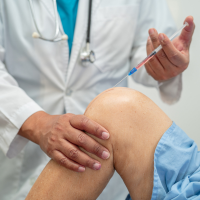
Why Choose Regenerative Therapy?
Regenerative therapy for knee pain and other joint issues offers a groundbreaking approach to managing arthritis. By harnessing the body’s natural healing mechanisms, these innovative treatments aim to restore joint function, reduce pain, and improve the quality of life for patients. These therapies often involve the use of stem cells or platelet-rich plasma (PRP), which can stimulate tissue repair and regeneration. By promoting the growth of new tissue and reducing inflammation, regenerative therapies can provide long-lasting relief for individuals suffering from chronic joint pain.
Understanding Arthritis
Arthritis is a broad term that refers to a group of over 100 different conditions affecting the joints. These conditions cause pain, swelling, and stiffness in the joints, significantly impacting a person’s quality of life. While traditional treatments can help manage pain and improve function to some extent, they typically cannot restore damaged tissue or stop the progression of joint deterioration.
Osteoarthritis
Osteoarthritis is the most common form of arthritis. It occurs when the cartilage that cushions your joints gradually wears down due to normal wear and tear. This deterioration of cartilage leads to several issues:
Pain and Stiffness: As the cartilage wears away, bones begin to rub against each other, causing significant pain and stiffness in the joints. This is particularly noticeable during movement.
Bone Spurs: Over time, the friction between bones can lead to the development of bone spurs, which are bony projections that can cause additional pain and limit joint movement.
Weakening of Connective Tissues: The tissues that hold the joint together and attach muscle to bone can become weaker and less stable, exacerbating the pain and dysfunction.
Traditional management of osteoarthritis includes medications, physical therapy and life adjustments. However, these treatments typically provide only symptomatic relief and do not address the underlying cause or halt disease progression.
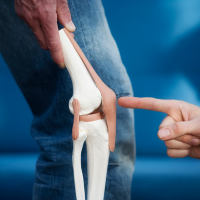
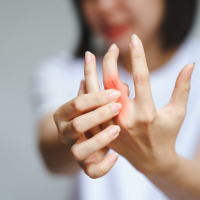
Rheumatoid Arthritis
Rheumatoid arthritis is an autoimmune disorder where the immune system mistakenly attacks the lining of the joints, known as the synovium. This leads to chronic inflammation that can cause significant damage over time. Key features of rheumatoid arthritis include:
Inflammation and Swelling: The affected joints become swollen, warm, and painful due to the ongoing inflammatory process.
Joint Damage: The inflammation can damage the cartilage and bone within the joint, leading to deformities and loss of function.
Systemic Symptoms: Unlike osteoarthritis, rheumatoid arthritis can affect other parts of the body, leading to fatigue, fever, and loss of appetite.
Arthritis, whether it’s osteoarthritis or rheumatoid arthritis, presents significant challenges. Traditional treatments focus on managing symptoms and improving function but often fall short of halting or reversing joint damage. Emerging treatments like regenerative therapy offer hope for better management and potential restoration of joint health, providing a more comprehensive approach to dealing with these debilitating conditions.
Regenerative Treatment Options-
Autologous Stem Cell Therapy
Autologous stem cell therapy uses stem cells that can develop into any cell type based on your body needs. When harvested from your bone marrow or fat tissue, these cells are purified and injected with a compound, encouraging them to regenerate new cartilage in arthritic joints. It is effective for individuals with early joint damage, osteoarthritis, and minimal remaining cartilage. It works by adjusting the inflammatory response, thereby reducing pain and swelling
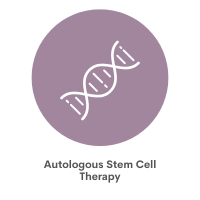

Platelet-Rich Plasma (PRP) Therapy
PRP (Platelet-Rich Plasma) therapy is a regenerative treatment that harnesses the body’s natural healing capabilities. The procedure involves taking a sample of your blood and spinning it in a centrifuge to concentrate the platelets, which are rich in growth factors. These growth factors are then injected into the injured or arthritic joint, where they stimulate tissue repair and healing.
PRP therapy has shown promising results in the treatment of various conditions, including PRP for knee pain and PRP for knee arthritis. By stimulating the body’s own healing response, PRP therapy can help reduce pain, improve joint function, and delay the need for invasive surgical procedures. The growth factors in PRP can promote the formation of new tissue, reduce inflammation, and accelerate the healing process.
One of the advantages of PRP therapy is its minimally invasive nature. The procedure typically involves a simple blood draw and injection, with minimal discomfort and a short recovery time. Unlike some other treatments that may require surgery or long-term medication, PRP therapy offers a more natural and less invasive approach to managing joint pain.
Alkem Stem One-Bone Marrow-Derived Stem Cell Injections
Stem cells for joint pains offer a promising approach to treating arthritic conditions. Injections of stem cells derived from bone marrow, which are rich in lipids, multipotent cells, hyaluronic acid, and cytokines, can provide significant benefits for inflamed, arthritic joints. These injections stimulate the creation of new tissue, leading to reduced pain and inflammation. Unlike corticosteroid injections, which offer temporary pain relief but can contribute to further cartilage degradation, regenerative stem cell injections provide a safer and more long-term solution for arthritic joints.
This innovative therapy holds great potential for individuals suffering from knee pain, knee stiffness, swelling knee, and even frozen shoulder. Stem cells have the ability to target the root cause of joint inflammation and promote healing, offering hope for a better quality of life for those affected by arthritis.
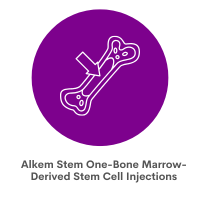
FAQ - Frequently Asked Questions
1. Does regenerative therapy work on knees?
Yes, regenerative therapy for knee, including stem cell and PRP treatments, can be effective for knee issues like osteoarthritis, promoting cartilage regeneration and reducing pain and inflammation.
2. What is regeneration therapy for the knee?
Regenerative knee treatment involves using stem cells or platelet-rich plasma (PRP) to repair and regenerate damaged tissues in the knee, particularly the cartilage.
3. What is the success rate of regenerative therapy?
Regenerative knee treatment success rate is around 80% to 90% for some procedures. It varies depending upon the individual’s condition and the type of therapy used.
4. How long does regenerative therapy last?
The effects of regenerative therapy can last for several months to years, depending on the treatment type and the patient’s condition. Some patients may require repeat treatments for sustained benefits.
5. Is regenerative injection therapy painful?
Regenerative injection therapy is minimally invasive and typically causes only mild discomfort during and after the procedure.
6. What is regenerative therapy for knee pain?
Regenerative therapy for knee pain includes treatments like PRP injections and stem cell therapy, which aim to reduce inflammation, promote tissue regeneration, and alleviate pain.
7. How is regenerative therapy done?
Regenerative therapy involves harvesting stem cells from fat or bone marrow, or concentrating platelets from the patient’s blood. These are then injected into the affected knee joint to promote healing.
8. What are the different types of regenerative therapy for knees?
Different types of regenerative therapies are:
Autologous Stem Cell Therapy: Using the patient’s own stem cells.
Bone Marrow-Derived Stem Cell Injections: Using stem cells from bone marrow.These are FDA approved stem cells
Platelet-Rich Plasma (PRP) Therapy: Using concentrated platelets from the patient’s blood.
9. What is the new treatment for knee arthritis?
With advancements in technology new treatments like regenerative therapies can be used for knee arthritis. PRP for knee arthritis and injecting stem cells for Knee pain can be considered to treat knee related problems.
10. How can I permanently cure knee pain?
While a permanent cure for knee pain depends on the underlying cause, treatments like regenerative therapy, lifestyle changes, physical therapy, and in some cases, surgery, can provide long-term relief.


